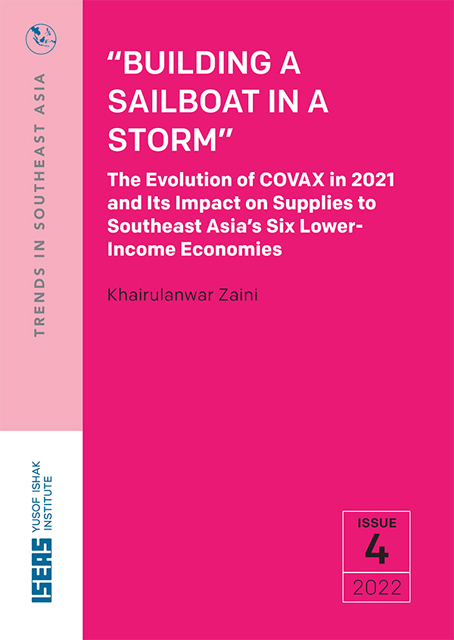 'Building a Sailboat in a Storm'
'Building a Sailboat in a Storm' Published online by Cambridge University Press: 01 September 2023
Introduction
As it became increasingly evident that vaccines would be central to the recovery from the global pandemic, the COVID-19 Vaccines Global Access (COVAX) Facility was created to ensure equitable access to COVID-19 vaccines, especially for poorer countries. However, the erratic and delayed COVAX shipments in the first half of 2021 led to doubts about the Facility’s ability to fulfil its pledge of securing and delivering 2 billion doses by the end of the year. In June, the Malaysian vaccine minister Khairy Jamaluddin derided it as an “abysmal failure”. Remarkably, by September 2021, the Facility was confident enough to forecast the allocation of 1.4 billion doses by the end of the year—with 1.2 billion of those to be disbursed gratis to lower-income countries. COVAX’s improved fortunes in the latter part of 2021 can primarily be attributed to a surge in dose donations from wealthier countries, as they began releasing their excess inventory of vaccines.
This article will examine how the COVAX Facility evolved in 2021 over two distinct phases and the implications for six lower-income Southeast Asian countries. In the first phase, which coincided with the first half of 2021 (1H), the COVAX Facility had to rely on its own ability to purchase vaccines from the manufacturers. In the second phase, from July onwards (2H), the Facility was instead sustained by dose donations from the West.
In the first phase, the supply of COVAX shots was scarce for Cambodia, Indonesia, Laos, the Philippines, Timor-Leste and Vietnam—the six Southeast Asian countries which qualified for free COVAX shots (hereafter referred to as the AMC6). In 1H 2021, the AMC6 were promised 25 million COVAX doses, but the Facility only delivered 16 million doses, or 65.3 per cent of the AMC6’s entitlement. The shift to the second phase significantly boosted the frequency and volume of COVAX shipments to the AMC6. In 2H 2021, a total of around 128 million COVAX doses were shipped to the AMC6, with around 104 million (80.9 per cent) of these shots sourced from dose donations from wealthier countries.
However, as this paper will elaborate at the end, the Facility’s evolution into its second phase (COVAX 2.0) does not entirely align with the goal of developing a truly multilateral institution to advance vaccine equity.
To save this book to your Kindle, first ensure [email protected] is added to your Approved Personal Document E-mail List under your Personal Document Settings on the Manage Your Content and Devices page of your Amazon account. Then enter the ‘name’ part of your Kindle email address below. Find out more about saving to your Kindle.
Note you can select to save to either the @free.kindle.com or @kindle.com variations. ‘@free.kindle.com’ emails are free but can only be saved to your device when it is connected to wi-fi. ‘@kindle.com’ emails can be delivered even when you are not connected to wi-fi, but note that service fees apply.
Find out more about the Kindle Personal Document Service.
To save content items to your account, please confirm that you agree to abide by our usage policies. If this is the first time you use this feature, you will be asked to authorise Cambridge Core to connect with your account. Find out more about saving content to Dropbox.
To save content items to your account, please confirm that you agree to abide by our usage policies. If this is the first time you use this feature, you will be asked to authorise Cambridge Core to connect with your account. Find out more about saving content to Google Drive.